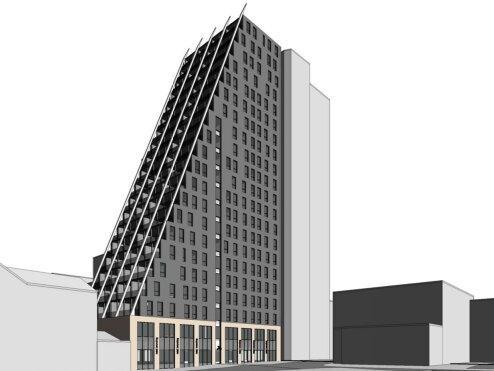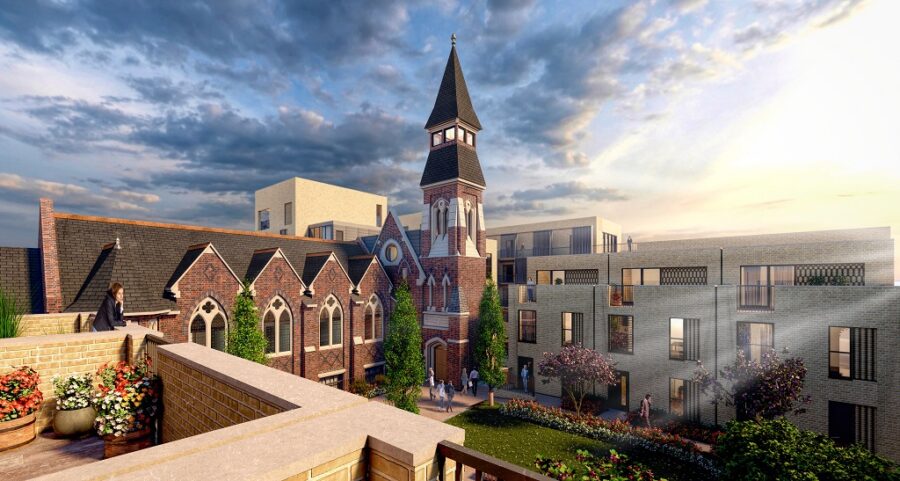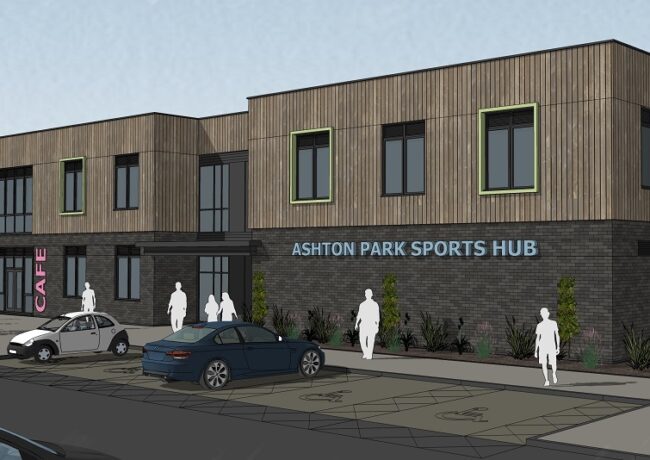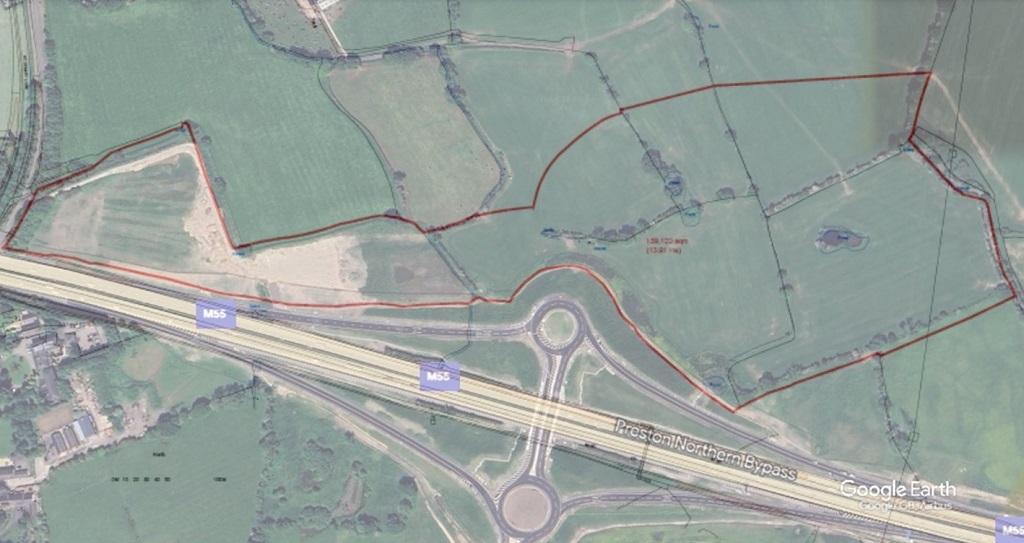Consent nears for pair of Preston apartment proposals
A sloped 21-storey residential scheme reminiscent of Manchester’s Urbis, and a redevelopment of a listed site criticised for its “violently different” architecture, are due to be approved in Preston.
At 5 Church Row, a proposal first submitted in 2017 has been amended and brought back to the council for a decision. The 21-storey block from developer Eastern Estates was designed by 1618 Architects, and includes 80 one-, two- and three-bedroom apartments.
The building slopes up from two storeys to 21, leading council planners recommending the scheme for approval to liken it to Manchester’s Urbis, now home to the National Football Museum that used to be based in Preston.
The designs have been revised to reduce the height but increase the number of flats from 69.
Sitting alongside the neighbouring 16-storey Guild Tower, the tower would reach a similar height, despite having more floors.
The partial demolition and residential conversion of the grade two-listed St Joseph’s Orphanage has also been recommended for approval, subject to a construction contract being in place to ensure that the redevelopment of the site can take place immediately after demolition.
Czero Developments and Buttress Architects submitted the planning application last year, requesting permission to demolish some of the buildings they argued were beyond saving, and convert the remainder into apartments.
St Joseph’s Orphanage was built on Mount Street, Preston, in 1872 for Roman Catholic girls. The buildings have stood empty for more than a decade and the site has been vulnerable to vandalism and lead theft, which has resulted in water ingress and fire damage.
Investigations revealed that the historic buildings were extensively infested with dry rot and large parts of the site were too unsafe to enter. Plans to deliver residential developments at the site previously were not progressed, due to issues with viability.
According to Czero and Buttress in their application, “most of the existing buildings are beyond saving”, and bringing forward the regeneration of the site will involve the demolition of most of the major buildings, which the developer said was “a last resort in a race against time”.
Buildings from the 1930s, 1950s, and the 1872 and 1877 blocks are to be pulled down.
Council planners have accepted this as necessary and recommended the project for approval. However, an objection has been lodged from the Victorian Society, stating the council’s decision not to use compulsory purchase powers to acquire the orphanage during the decade of decline means it must “bear a large part of the responsibility for the current state of the buildings”.
In the society’s view, this lack of action “casts grave doubts on the strength of the council’s commitment to protecting its designated heritage assets”.
The objection goes on to cite the “violently different architectural style” proposed for the new-build elements. But the scheme has received a letter of support from a local resident praising the retention of the historic chapel.
Due to coronavirus lockdown restrictions around meetings, planning decisions are being made by Preston City Council chief executive Adrian Phillips, who is set to decide on the latest wave of applications next week.





